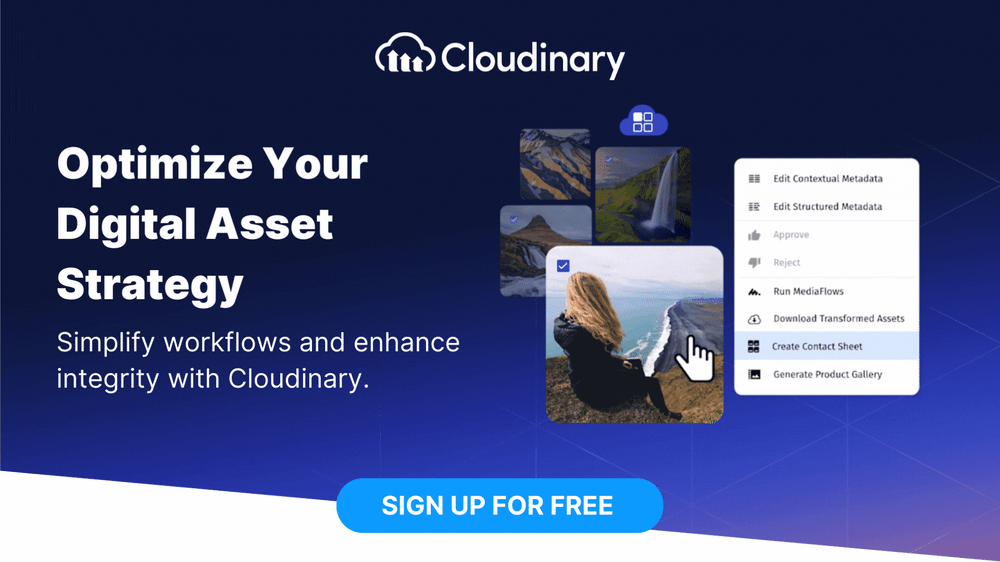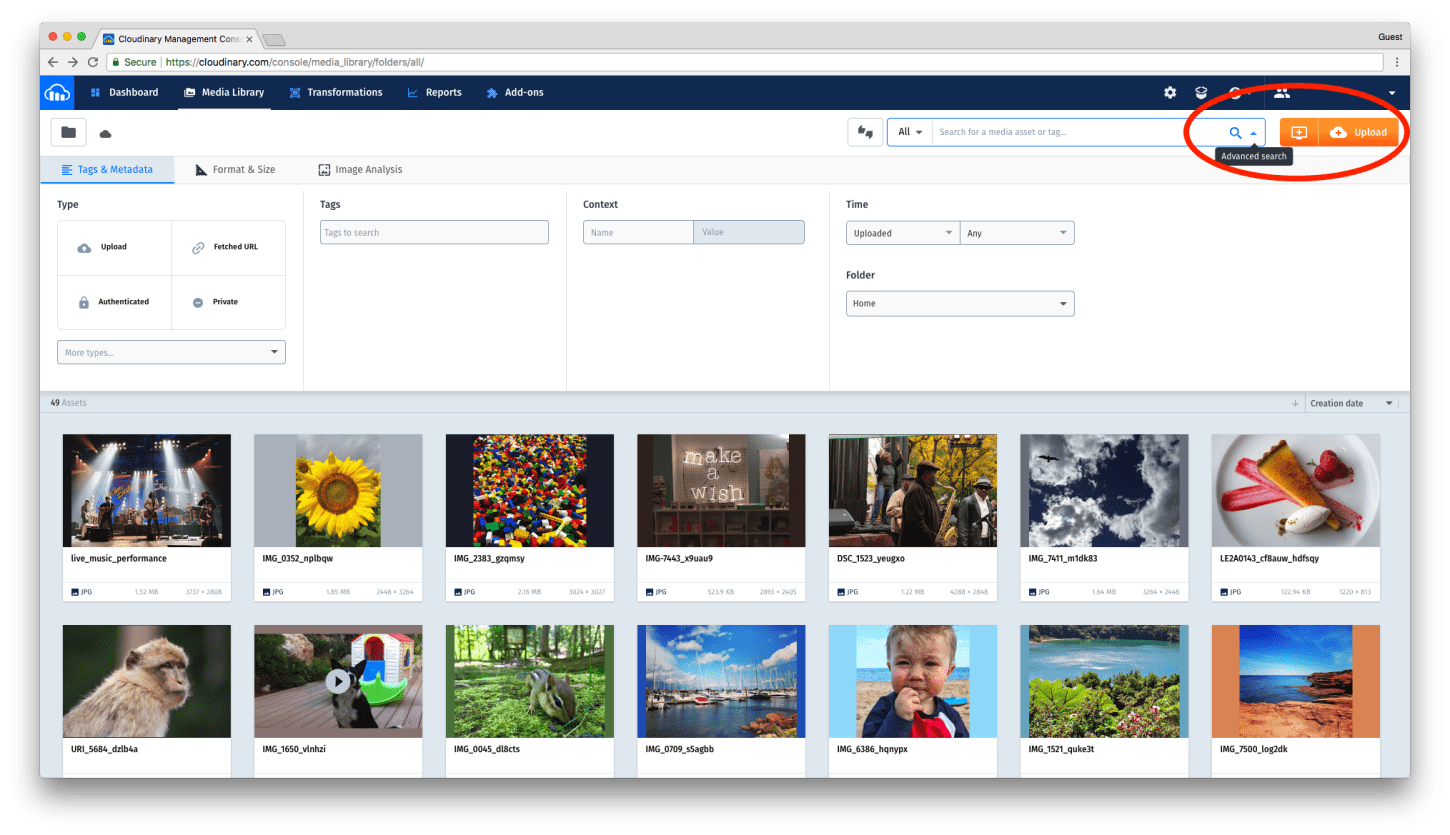
Cloudinary Digital Asset Management: Complete Buyer's Guide
API-first DAM platform
Cloudinary Digital Asset Management positions itself as the API-first DAM platform that transforms how marketing and advertising teams manage, optimize, and deliver visual content at scale. Built for organizations requiring real-time asset transformations and seamless martech integration, Cloudinary delivers intelligent automation that reduces manual workflows while accelerating campaign deployment.
Market Position & Maturity
Market Standing
Cloudinary occupies a distinctive market position as an API-first DAM platform within the rapidly expanding digital asset management sector, which projects growth from $6.59 billion in 2025 to $12.80 billion by 2030[133].
Company Maturity
Company maturity indicators demonstrate operational stability through established enterprise customer relationships including Neiman Marcus, River Island, and lastminute.com[138][139][140][141][142].
Growth Trajectory
Growth trajectory evidence includes successful customer scaling examples, such as Lucid Motors expanding from 20 to 300 DAM users within one year[122].
Industry Recognition
Industry recognition extends beyond analyst rankings to include G2 leadership positions in image optimization categories[146].
Strategic Partnerships
Strategic partnerships include Google AI integration for semantic categorization[135] and Adobe Creative Cloud compatibility for workflow continuity[121][124].
Longevity Assessment
The company's risk-sharing contract offerings with performance guarantees indicate financial stability and confidence in delivery capabilities[120][124].
Proof of Capabilities
Customer Evidence
Enterprise Customer Validation demonstrates Cloudinary's effectiveness across diverse industry implementations with measurable business outcomes. Neiman Marcus achieved 50% reduction in photoshoot-to-web timelines, cutting deployment from four weeks to two weeks while simultaneously achieving 3x faster page loads through automated optimization workflows[139][142].
Quantified Outcomes
E-commerce Performance Evidence includes River Island's automated metadata application for product launches, which significantly accelerated time-to-market for fashion collections[140].
Case Study Analysis
Scale Implementation Success appears in Lucid Motors' expansion from 20 to 300 DAM users within one year through role-based training and department-specific champion strategies[122].
Market Validation
Market Recognition Validation includes IDC MarketScape Leader status for Intelligent DAM in July 2024[137] and G2 leadership positions in image optimization categories[146].
Competitive Wins
Technical Accuracy Validation includes Fever Labs' negotiated performance guarantee requiring 95% precision in automated metadata application for fashion e-commerce images[124].
Reference Customers
Reference customers include Neiman Marcus, River Island, and lastminute.com[138][139][140][141][142].
AI Technology
AI integration spans four primary areas within Cloudinary's technical framework. Google AI integration automates semantic categorization through machine learning algorithms that analyze visual content and apply contextual metadata[135].
Architecture
Cloudinary's API-first architecture fundamentally differentiates its technical approach from traditional DAM platforms, enabling composable deployment where organizations integrate specific components rather than comprehensive platform adoption[134][137].
Primary Competitors
Primary Competitive Landscape positions Cloudinary within the technical flexibility category against API-first competitors, distinguishing from enterprise security/compliance solutions like Aprimo and user experience-focused tools like Canto and Frontify[134][137].
Competitive Advantages
Competitive Advantages center on API-first architecture enabling composable deployment, real-time transformation capabilities surpassing static asset storage competitors, and developer-friendly implementation that enterprise platforms struggle to match.
Market Positioning
Market Positioning Context reveals clear segmentation between enterprise security/compliance solutions and technical flexibility platforms.
Win/Loss Scenarios
Win/Loss Scenario Analysis indicates Cloudinary wins when organizations prioritize API integration, real-time transformations, and developer-controlled implementations.
Key Features

Pros & Cons
Use Cases
Integrations
Pricing
Featured In Articles
Comprehensive analysis of AI Brand Asset Management for AI Marketing & Advertising for AI Marketing & Advertising professionals. Expert evaluation of features, pricing, and implementation.
How We Researched This Guide
About This Guide: This comprehensive analysis is based on extensive competitive intelligence and real-world implementation data from leading AI vendors. StayModern updates this guide quarterly to reflect market developments and vendor performance changes.
146+ verified sources per analysis including official documentation, customer reviews, analyst reports, and industry publications.
- • Vendor documentation & whitepapers
- • Customer testimonials & case studies
- • Third-party analyst assessments
- • Industry benchmarking reports
Standardized assessment framework across 8 key dimensions for objective comparison.
- • Technology capabilities & architecture
- • Market position & customer evidence
- • Implementation experience & support
- • Pricing value & competitive position
Research is refreshed every 90 days to capture market changes and new vendor capabilities.
- • New product releases & features
- • Market positioning changes
- • Customer feedback integration
- • Competitive landscape shifts
Every claim is source-linked with direct citations to original materials for verification.
- • Clickable citation links
- • Original source attribution
- • Date stamps for currency
- • Quality score validation
Analysis follows systematic research protocols with consistent evaluation frameworks.
- • Standardized assessment criteria
- • Multi-source verification process
- • Consistent evaluation methodology
- • Quality assurance protocols
Buyer-focused analysis with transparent methodology and factual accuracy commitment.
- • Objective comparative analysis
- • Transparent research methodology
- • Factual accuracy commitment
- • Continuous quality improvement
Quality Commitment: If you find any inaccuracies in our analysis on this page, please contact us at research@staymodern.ai. We're committed to maintaining the highest standards of research integrity and will investigate and correct any issues promptly.